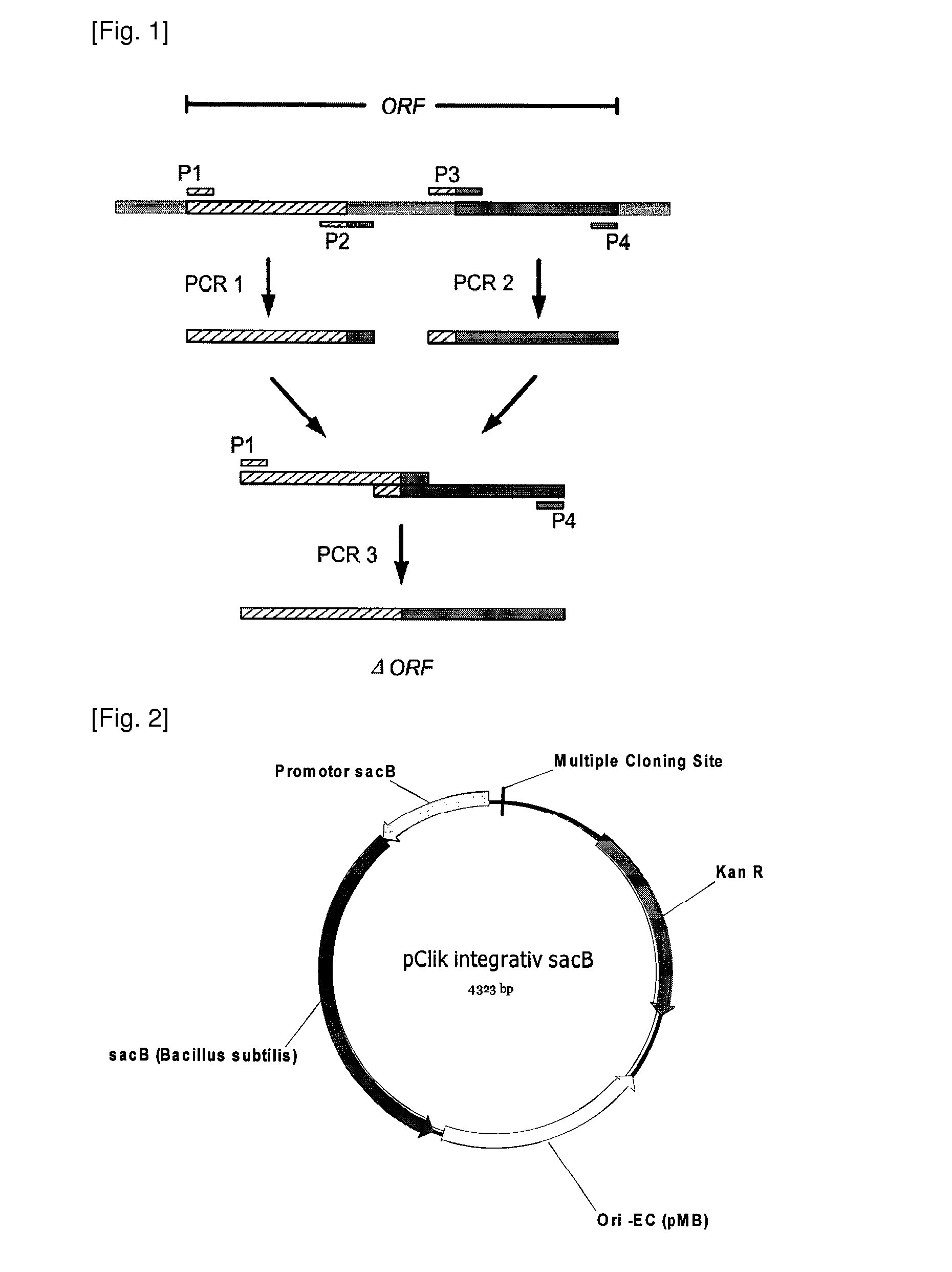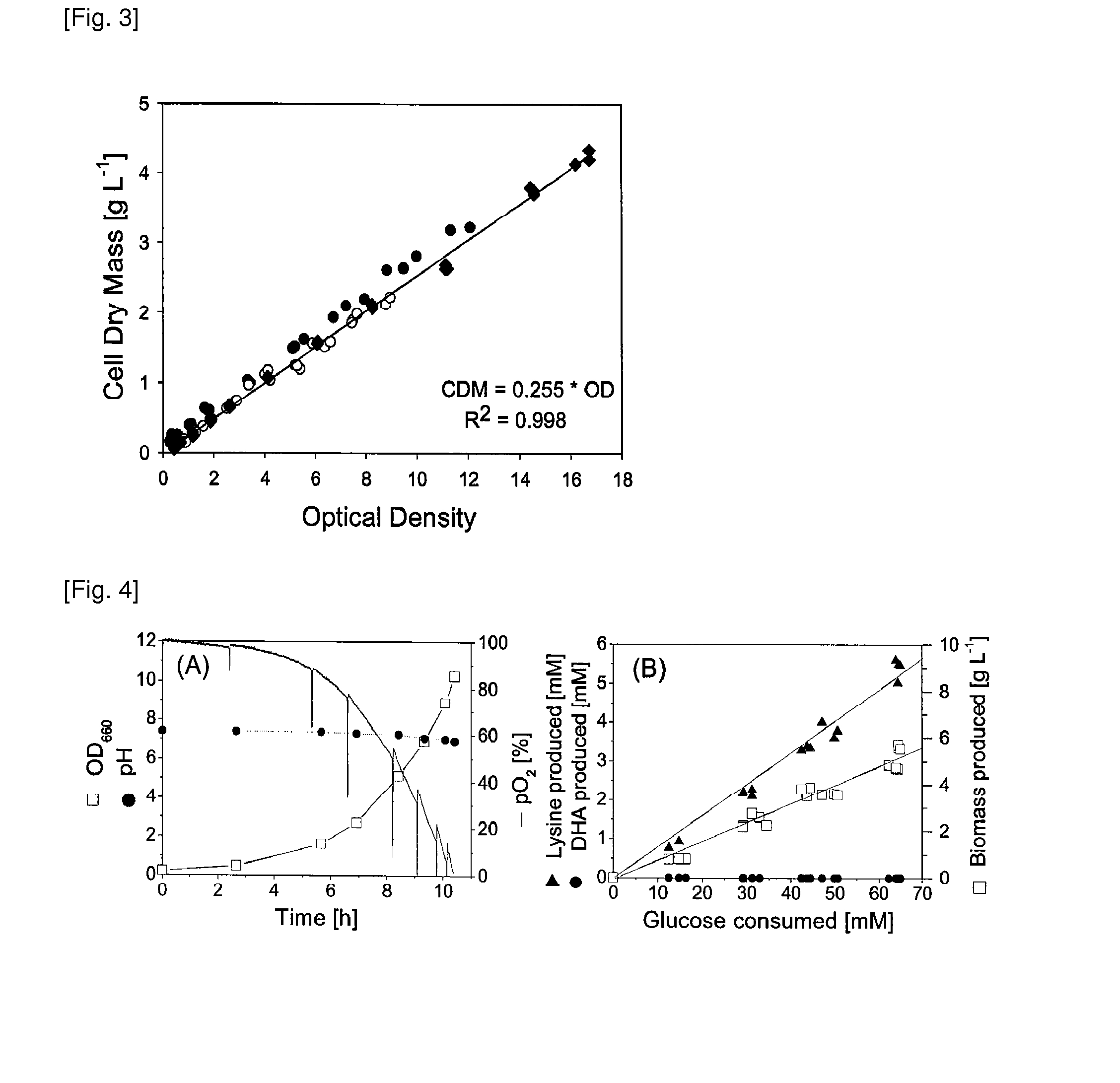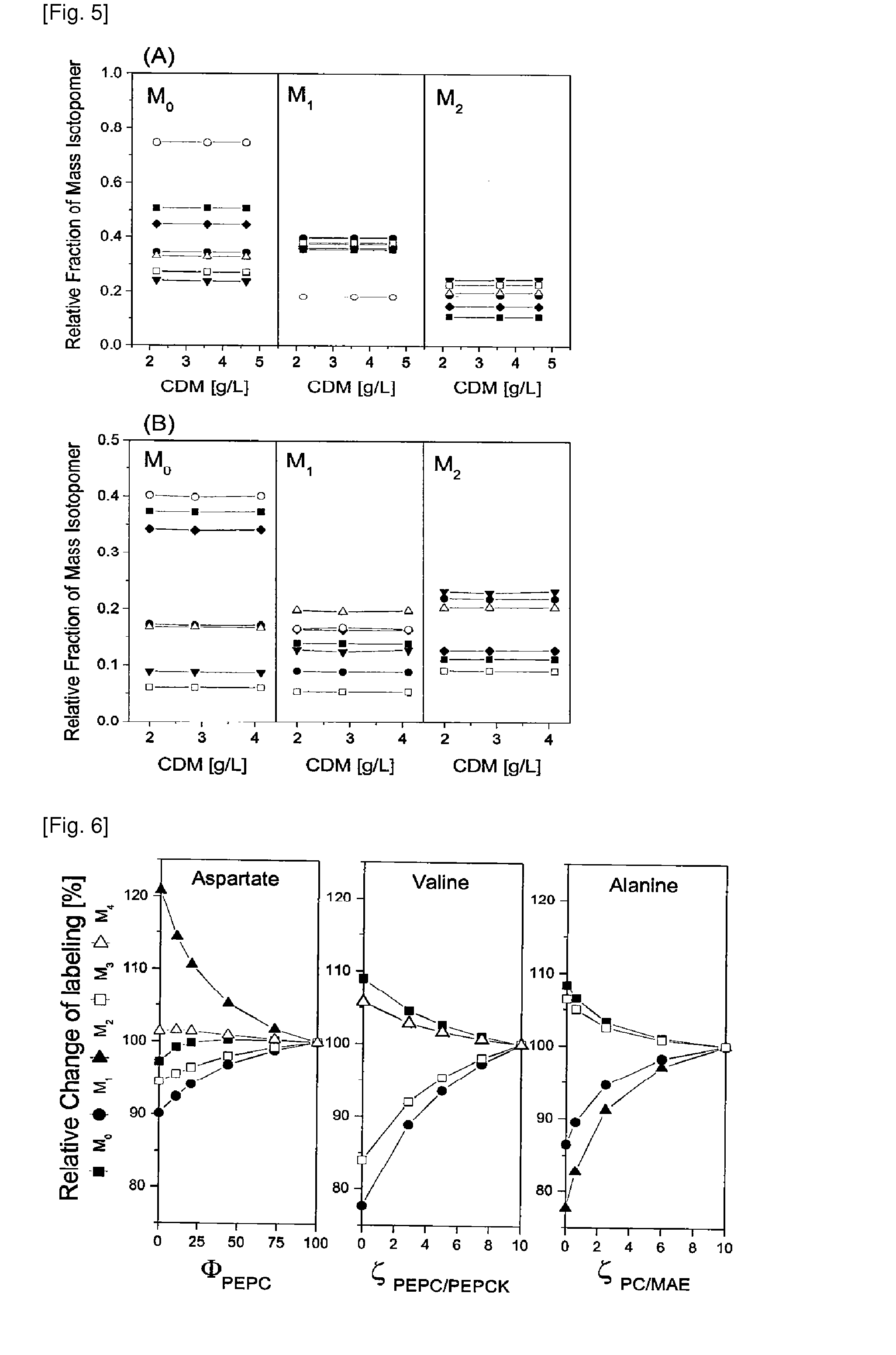Production process for amino acids of the aspartate family using microorganisms
a technology of aspartate and amino acid, applied in the field of production of amino acids of the aspartate family, can solve the problems of limiting productivity, severe disadvantages of conventional production strains, and hardly being applied in an industrial process
- Summary
- Abstract
- Description
- Claims
- Application Information
AI Technical Summary
Benefits of technology
Problems solved by technology
Method used
Image
Examples
examples
[0215]In the following examples, standard techniques of recombinant DNA technology and molecular biology were used that were described in various publications, e.g. Sambrook et al. (2001), Molecular Cloning: A Laboratory Manual, 3rd edition, Cold Spring Harbor Laboratory Press, or Ausubel et al. (2007), Current Protocols in Molecular Biology, Current Protocols in Protein Science, edition as of 2002, Wiley Interscience. Unless otherwise indicated, all cells, reagents, devices and kits were used according to the manufacturer's instructions.
[0216]Material and Methods
[0217]Bacterial Strains
[0218]All strains of C. glutamicum were derived from the wild type ATCC 13032 (American Type Culture Collection, Manassas, Va., USA) by stable genetic modification. Escherichia coli DH5α and NM522, purchased from Invitrogen (Karlsruhe, Germany) were used for vector amplification and DNA methylation, respectively. All strains are listed in Table 2.
TABLE 2Table 2: Bacterial strains used in the present w...
PUM
| Property | Measurement | Unit |
|---|---|---|
| temperature | aaaaa | aaaaa |
| temperature | aaaaa | aaaaa |
| volume | aaaaa | aaaaa |
Abstract
Description
Claims
Application Information
 Login to View More
Login to View More - R&D
- Intellectual Property
- Life Sciences
- Materials
- Tech Scout
- Unparalleled Data Quality
- Higher Quality Content
- 60% Fewer Hallucinations
Browse by: Latest US Patents, China's latest patents, Technical Efficacy Thesaurus, Application Domain, Technology Topic, Popular Technical Reports.
© 2025 PatSnap. All rights reserved.Legal|Privacy policy|Modern Slavery Act Transparency Statement|Sitemap|About US| Contact US: help@patsnap.com



